This gold pin is notoriously tough to earn. You must pass a grueling, 65-week-long training program to get one.
- The Trident is a gold pin that identifies U.S. Navy SEALs, and it’s filled with meaning, from the eagle to the pistol.
- Sometimes, the pin goes by other nicknames, including “Chicken on a Fork” and “The Budweiser.”
- It’s also at the center of a controversy involving former U.S. Navy Seal Edward Gallagher.
The U.S. Navy’s Sea, Air, and Land (SEAL) Teams are arguably the most elite special operations force on the planet. Trained in warfare on land and sea, SEALs have fought continuously since 9/11 in places like Iraq, Afghanistan, and Syria—and likely other destinations that the general public doesn’t even know about.
On their uniforms, SEALs wear a special symbol, called the Trident. It’s a gold pin that identifies the wearer as part of a select group that has endured SEAL training, earning them the title of certified special warfare operator.
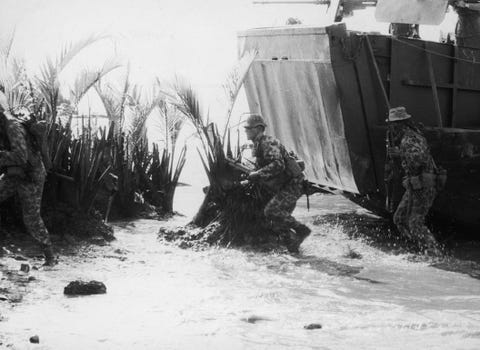
In the early 1960s, when then-President John F. Kennedy put his support behind the U.S. Army’s Special Forces, the Navy decided to create its own commando force, the SEALs. Like the green beret of the Special Forces, the SEAL’s Trident has come to symbolize a fighting force made up of the crème de la crème. SEALs have served in the Vietnam War and every conflict since involving the U.S.
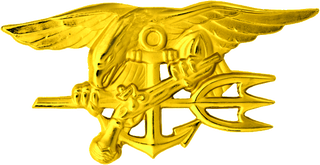
The Trident is composed of four objects: an anchor, eagle, trident, and pistol. As the Pritzker Military Museum & Library explains:
The anchor signifies the Navy as the branch of service. The eagle symbolizes the air and holds an item in each talon. In the right talon is the trident, which symbolizes Neptune, the Roman God of the sea. In the left talon is a cocked flintlock pistol, which symbolizes land warfare and a state of constant readiness.
The Trident also has a number of playful nicknames, including “the Budweiser,” after its resemblance to the Anheuser-Busch company logo that appears on every can of Bud beer. Another nickname is “Chicken on a Fork,” though one of the most popular nicknames among SEALs is simply “the Bird.”
The Trident is issued after a grueling, 65-week-long training program that starts with the infamous Basic Underwater Demolition/SEAL training and concludes with SEAL Qualification Training, whose topics include battlefield medicine, communications, land navigation, marksmanship, close quarters defense and combat, tactics, demolition, maritime operations, combat swimming, and tactical parachuting.

The Trident was originally worn in both gold and silver—gold for officers and silver for enlisted. This changed in 1970, when a gold trident became standard for all SEALs. The switch was reportedly made due to the fact that both officers and enlisted personnel attend SEAL training side-by-side, without concern for rank.
To lose the privilege of wearing the Trident, a sailor usually has shown some sort of poor performance. If a commanding officer has lost “faith and confidence in the service member’s ability to perform” their duties, they may pull the SEAL’s trident. Per the Navy’s Military Personnel Manual 1220-085, “members whose Navy Enlisted Classification(s) (NEC(s)) is/are removed for disciplinary and/or administrative action per MILPERSMAN 1220-300 are no longer authorized to wear the insignia.”
This formal excommunication process came to light in the highly publicized case of former U.S. Navy Seal Edward Gallagher. In 2018, he was charged with 10 offenses under the Uniform Code of Military Justice, including allegations that he had stabbed and killed a 17-year-old ISIS prisoner while sedated, and even took photos of himself holding up the deceased person’s head to share with friends.
Eventually, Gallagher was acquitted on all but one charge and was demoted from Chief Petty Officer (a leadership and technical role) to Petty Officer First Class. However, in December 2019, President Donald Trump reversed the demotion and ordered the Navy to cancel the proceedings that would revoke his trident, and therefore his status as a Special Warfare Operator.
In several films and TV shows depicting SEALs, the commandos are laid to rest in a cemetery as their teammates pound their Tridents into the coffin. This seems to be confirmed by this photo of SEAL sniper Chris Kyle’s funeral.
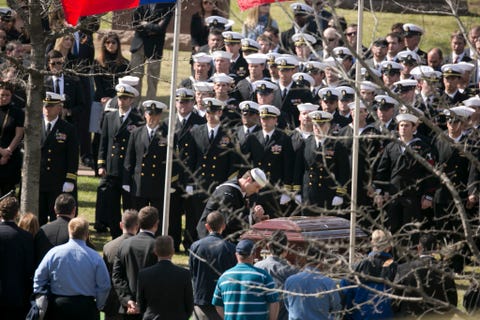
The Navy SEAL’s Creed also sheds insight as to what the Trident means to those that wear it. The creed, made official in 2005, says:
My Trident is a symbol of honor and heritage. Bestowed upon me by the heroes that have gone before, it embodies the trust of those I have sworn to protect. By wearing the Trident I accept the responsibility of my chosen profession and way of life. It is a privilege that I must earn every day.
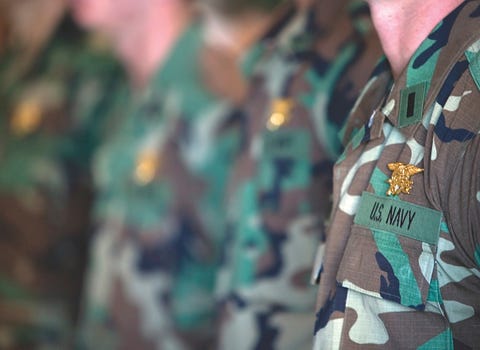
Additional reporting by Courtney Linder
https://www.popularmechanics.com/military/a29995035/navy-seal-trident/

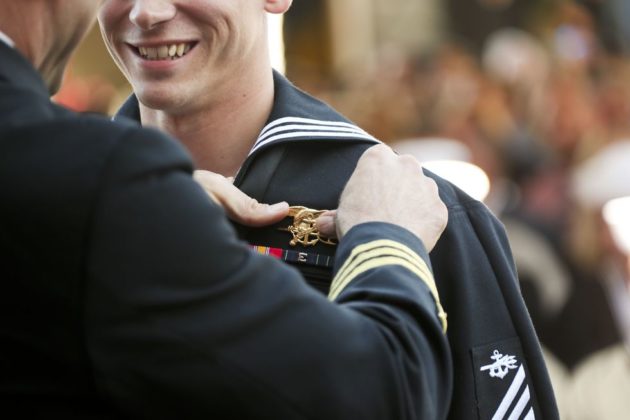
Leave a Reply
You must be logged in to post a comment.